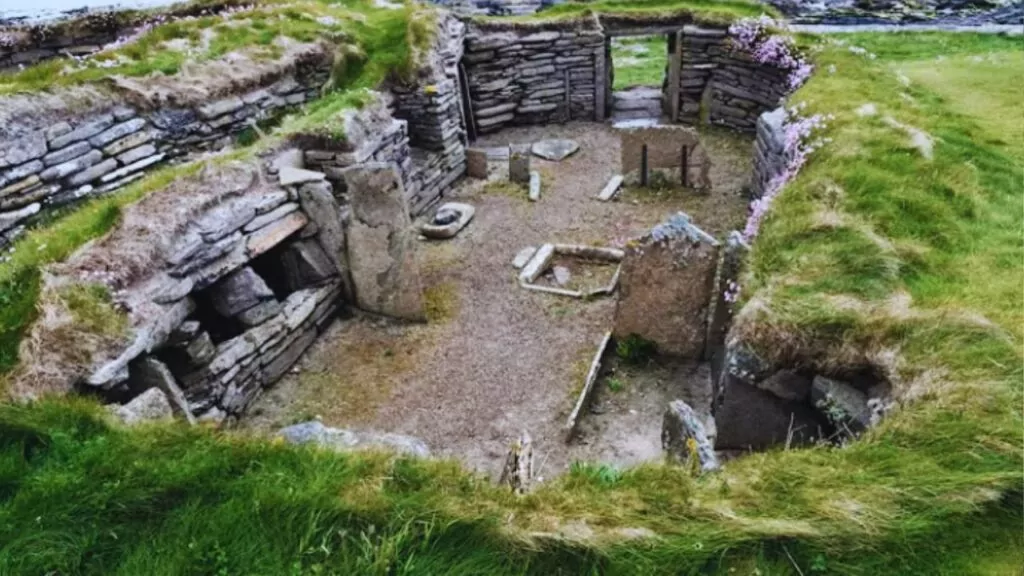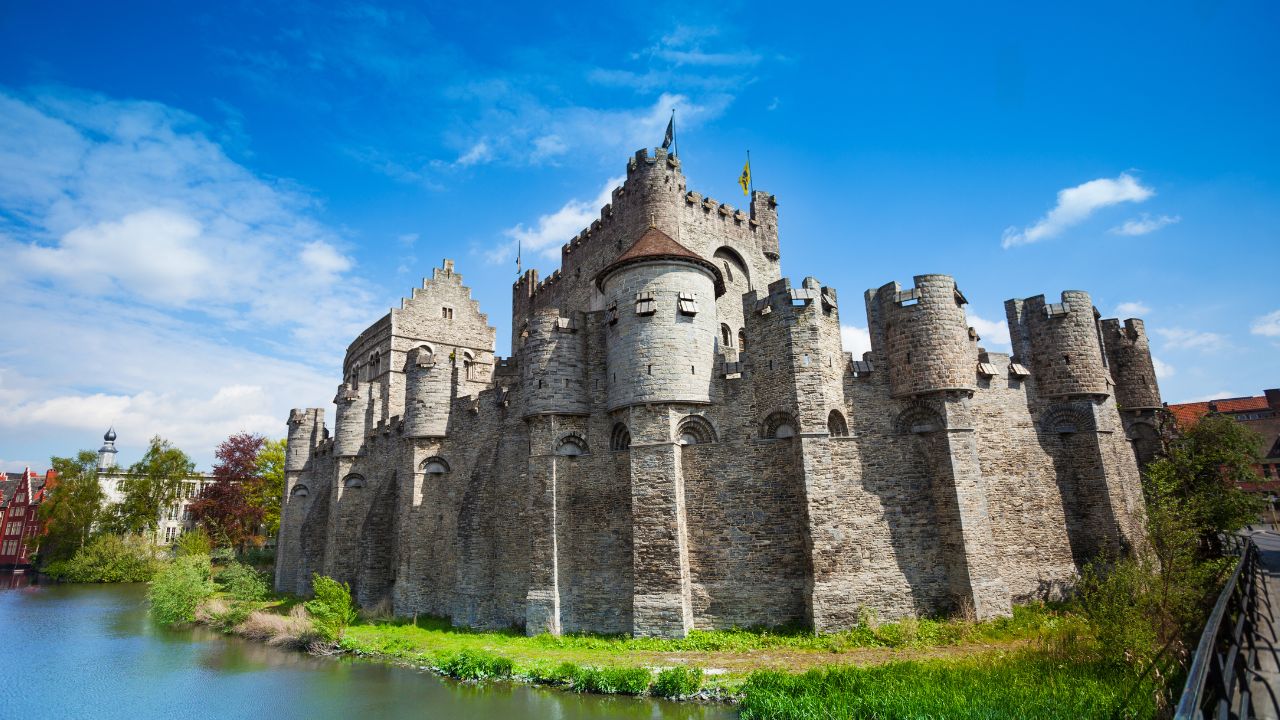Europe is known for its castles, cathedrals, and cobblestone streets. But long before modern cities and medieval kingdoms, ancient people left behind incredible prehistoric landmarks that still stand today. These places are silent witnesses to early human life. They offer a unique glimpse into our past, showing how early societies lived, worshipped, and built awe-inspiring structures with simple tools.
In this article, we’ll take you on a journey to 10 prehistoric landmarks in Europe that you should visit at least once in your lifetime. These sites are rich in history, full of mystery, and perfect for anyone who loves culture, travel, or archaeology.
Why Prehistoric Landmarks Matter in Today’s Travel World
Prehistoric landmarks are more than old stones or ruins. They are cultural treasures that tell the story of early civilization. Visiting these places helps us understand the human journey—from hunters and gatherers to community builders. These landmarks are often protected by UNESCO or local governments because they offer value that goes beyond time.
Heritage tourism is growing fast. People now want experiences that are educational, meaningful, and unique. Prehistoric landmarks provide all three. When you stand in front of a 5,000-year-old tomb or look at cave art made by early humans, you feel connected to something greater.
Benefits of Visiting Prehistoric Landmarks
| Benefit | Description |
| Cultural Insight | Understand early human civilization and spiritual beliefs. |
| Unique Experience | Visit lesser-known places that are rich in history. |
| Photographic Beauty | These landmarks are often set in stunning natural landscapes. |
10 Must-Visit Prehistoric Landmarks in Europe

Europe is home to some of the most fascinating ancient sites in the world. These prehistoric landmarks not only showcase the ingenuity of early humans but also reflect the roots of modern civilization. Here are 10 must-visit sites that bring history to life and offer a unique travel experience far from the ordinary tourist trail.
1. Stonehenge – Wiltshire, England
Located in southern England, Stonehenge is one of the most iconic prehistoric monuments in the world. It attracts millions of visitors each year who come to witness its mysterious arrangement of giant stones and its spiritual ambiance.
Why It’s Famous
Stonehenge is one of the world’s most famous prehistoric landmarks. Built around 3000 BC to 2000 BC, this circle of massive stones continues to amaze scientists and travelers alike. Its exact purpose is still unknown, but many believe it was used for religious ceremonies or astronomical tracking.
Visitor Tips
- Located near Salisbury
- Best visited at sunrise or sunset for dramatic views
- Entry via timed tickets through English Heritage
Fun Fact
Stonehenge is aligned with the summer solstice sunrise, attracting thousands every June.
| Feature | Info |
| Age | ~5,000 years |
| Type | Stone Circle |
| UNESCO Status | Yes |
| Access | English Heritage visitor center |
2. Skara Brae – Orkney, Scotland
Hidden in the Orkney Islands of Scotland, Skara Brae offers a remarkable look into Neolithic life. The stone village remains well-preserved and showcases how our ancestors built sustainable homes and communities.
Why It’s Famous
Skara Brae is a Neolithic village that dates back to 3100 BC. It offers one of the best-preserved prehistoric dwellings in Europe. The site includes stone houses with built-in furniture, drainage systems, and passageways.
Visitor Tips
- Located on the Orkney Islands
- Open all year, but best during summer
- A visitor center helps explain its history
Fun Fact
Skara Brae was discovered in 1850 after a storm revealed the underground homes.
| Feature | Info |
| Age | Over 5,000 years |
| Type | Stone Village |
| UNESCO Status | Yes |
| Location | Orkney, Scotland |
3. Lascaux Caves – Dordogne, France

Nestled in the hills of southwestern France, the Lascaux Caves hold a treasure trove of ancient art. They give us one of the clearest pictures of how early humans expressed themselves through visual storytelling.
Why It’s Famous
Lascaux contains over 600 prehistoric wall paintings, mostly of animals. These were painted over 17,000 years ago by early humans. The original cave is closed to the public, but a full replica, Lascaux IV, is open.
Visitor Tips
- Visit Lascaux IV for an immersive replica experience
- Tickets can be booked online
- Take the guided tour for deeper insights
Fun Fact
The cave paintings include images of now-extinct animals.
| Feature | Info |
| Age | 17,000 years |
| Type | Cave Art |
| UNESCO Status | Yes |
| Replica | Lascaux IV |
4. Newgrange – County Meath, Ireland
Set in Ireland’s lush countryside, Newgrange is a massive stone structure that amazes visitors with its perfect engineering and astronomical precision. It stands as a testament to ancient Ireland’s spiritual and scientific achievements.
Why It’s Famous
Newgrange is a massive Neolithic passage tomb built over 5,000 years ago. It predates the Egyptian pyramids and is known for its winter solstice light phenomenon.
Visitor Tips
- Only accessible via Brú na Bóinne Visitor Centre
- Book early for Winter Solstice lottery
- Best visited in winter for light alignment
Fun Fact
On the Winter Solstice, sunlight enters the tomb and lights up the inner chamber for 17 minutes.
| Feature | Info |
| Age | Over 5,000 years |
| Type | Passage Tomb |
| UNESCO Status | Yes |
| Country | Ireland |
5. Altamira Cave – Cantabria, Spain
Tucked away in northern Spain, Altamira Cave reveals humanity’s artistic side. It captures the creativity and vision of early humans through intricate and colorful wall paintings.
Why It’s Famous
Altamira is known as the “Sistine Chapel of Prehistoric Art” for its stunning ceiling paintings. These works were created by Paleolithic artists over 14,000 years ago.
Visitor Tips
- Visit the replica at Altamira Museum
- Original cave closed to preserve paintings
- Great for families and history lovers
Fun Fact
The cave was discovered by a child in 1879.
| Feature | Info |
| Age | ~14,000 years |
| Type | Cave Art |
| UNESCO Status | Yes |
| Location | Northern Spain |
6. Carnac Stones – Brittany, France
Stretching across the French countryside, the Carnac Stones create a surreal and powerful sight. These rows of megaliths offer a deep sense of mystery and ancient purpose.
Why It’s Famous
The Carnac Stones are one of the largest collections of standing stones in the world. There are over 3,000 stones, most aligned in straight rows.
Visitor Tips
- Open-air site with optional guided tours
- Spring and summer offer better weather
- Wear comfortable shoes for walking
Fun Fact
The purpose of the alignments is still unknown, though many theories exist.
| Feature | Info |
| Age | 6,000 years |
| Type | Megalithic Alignment |
| UNESCO Status | Tentative |
| Country | France |
7. Knap of Howar – Papa Westray, Scotland

Located on a remote island, the Knap of Howar gives you an intimate look at the lifestyle of early farmers. It’s peaceful, undisturbed, and deeply atmospheric.
Why It’s Famous
The Knap of Howar is a pair of stone houses believed to be the oldest preserved homes in Northern Europe, dating back to 3700 BC.
Visitor Tips
- Located on a remote Orkney island
- Best accessed by ferry or flight
- Not crowded, ideal for peaceful visits
Fun Fact
The site includes stone furniture still in place from the Neolithic era.
| Feature | Info |
| Age | Over 5,000 years |
| Type | Neolithic House |
| UNESCO Status | No, but protected |
| Country | Scotland |
8. Hypogeum of Ħal Saflieni – Paola, Malta
This underground marvel is unlike anything else in Europe. Carefully carved into limestone, it served as both a burial site and a ceremonial space.
Why It’s Famous
This underground temple and burial site is unique for its three levels carved into rock, dating back to around 4000 BC.
Visitor Tips
- Limited to 10 visitors per hour
- Book months in advance
- Closed on public holidays
Fun Fact
The “Oracle Room” produces eerie echoes and perfect acoustics.
| Feature | Info |
| Age | Over 5,000 years |
| Type | Underground Temple |
| UNESCO Status | Yes |
| Country | Malta |
9. Ġgantija Temples – Gozo, Malta
The Ġgantija Temples are an ancient complex that feels surreal to explore. Their massive stones and unique layout reveal the extraordinary skills of early builders.
Why It’s Famous
Older than the Pyramids of Egypt, these temples were built between 3600 and 3200 BC using huge limestone blocks.
Visitor Tips
- Take a short ferry ride from Malta to Gozo
- Great for a day trip
- Nearby museum provides extra context
Fun Fact
Legends say a giantess built the temples in one night while carrying her baby.
| Feature | Info |
| Age | ~5,500 years |
| Type | Megalithic Temple |
| UNESCO Status | Yes |
| Country | Malta |
10. Dolmen of Menga – Andalusia, Spain
Set in the heart of Andalusia, this dolmen complex showcases prehistoric burial customs and brilliant architectural techniques using gigantic stones.
Why It’s Famous
Part of the Antequera Dolmens Site, the Menga Dolmen is an enormous burial mound made of massive stone slabs, some weighing over 180 tons.
Visitor Tips
- Entry is free
- Easily accessible from Malaga
- Nearby sites include El Romeral and Viera Dolmens
Fun Fact
The dolmen was built without mortar or metal tools.
| Feature | Info |
| Age | Over 5,000 years |
| Type | Megalithic Tomb |
| UNESCO Status | Yes |
| Country | Spain |
Tips for Visiting Prehistoric Sites Responsibly

- Respect preservation rules: Don’t touch the stones or artwork.
- Book in advance: Many sites have limited access.
- Dress appropriately: Some places require hiking or walking.
- Use official guides: This supports local jobs and offers deeper insights.
- Sustainable travel: Use eco-friendly transport and avoid littering.
| Tip | Why It Matters |
| Avoid touching artifacts | Preserves them for future generations |
| Book tickets early | Ensures you don’t miss limited-access sites |
| Respect local culture | Builds good relationships with host communities |
Map of Prehistoric Sites in Europe
| Landmark | Country | Period | Type | UNESCO Status |
| Stonehenge | England | Neolithic | Stone Circle | Yes |
| Skara Brae | Scotland | Neolithic | Settlement | Yes |
| Lascaux | France | Paleolithic | Cave Art | Yes |
| Newgrange | Ireland | Neolithic | Tomb | Yes |
| Altamira | Spain | Paleolithic | Cave Art | Yes |
| Carnac Stones | France | Neolithic | Megalithic | Tentative |
| Knap of Howar | Scotland | Neolithic | House | Protected |
| Hypogeum | Malta | Neolithic | Underground Temple | Yes |
| Ġgantija | Malta | Neolithic | Temple | Yes |
| Dolmen of Menga | Spain | Neolithic | Tomb | Yes |
Final Thoughts: Walking Through Time in Europe
Exploring Europe’s prehistoric landmarks is like walking through a living museum. These places aren’t just ruins—they are powerful reminders of how far humanity has come. Each site tells a different story, from spiritual rituals to daily life.
Whether you’re a history buff, a curious traveler, or someone seeking a deeper connection to the past, these 10 landmarks offer something truly special. So pack your bags, charge your camera, and prepare to step into history.





























